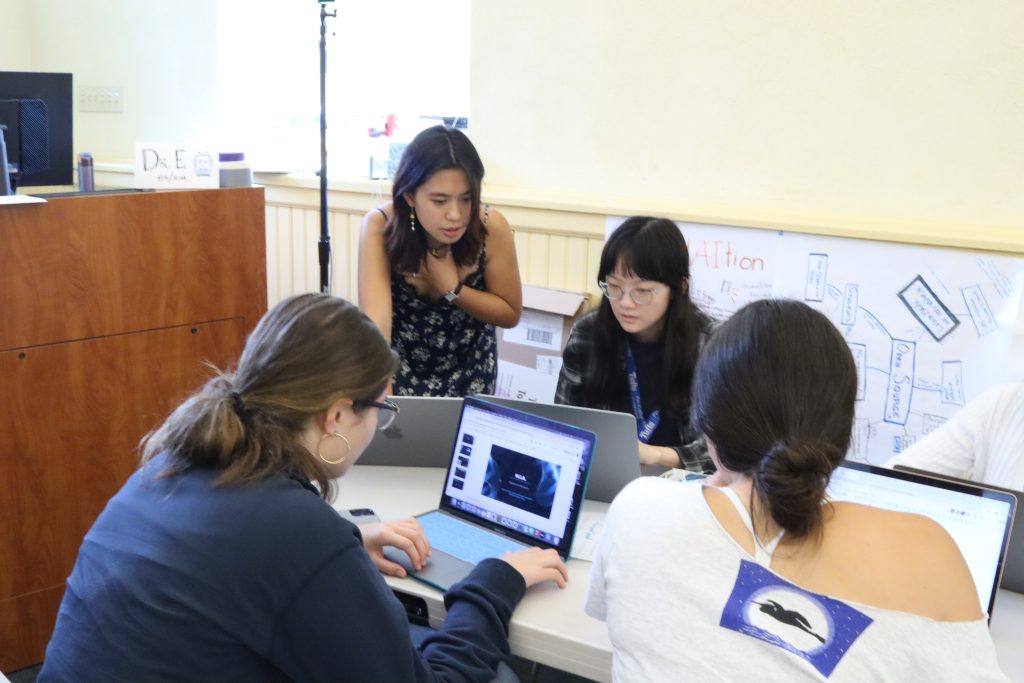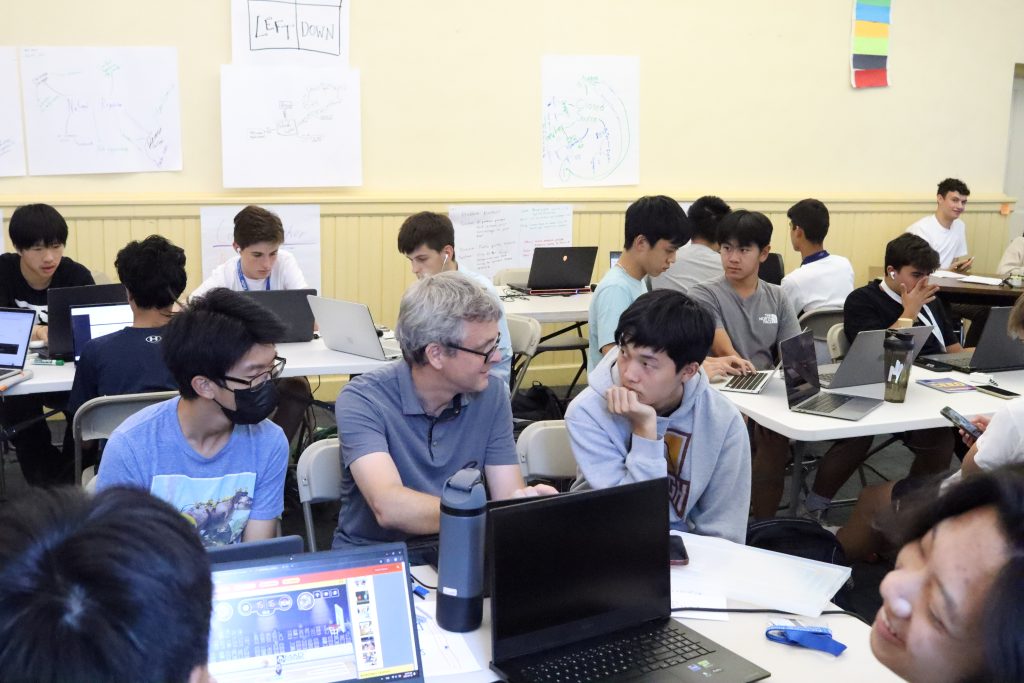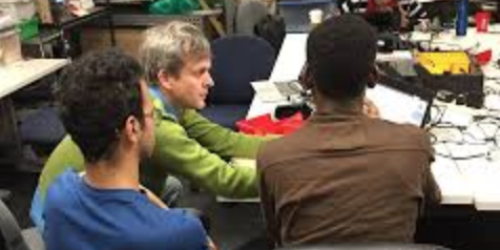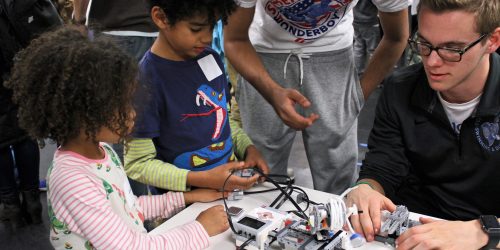Tufts Computer Engineering student Amanda Lexine Sunga recounts her summer experience as a Teaching Fellow for the new “Engineering with AI” program for high school students.

If I were a high school student today, the last thing I’d expect to hear from an instructor would be: “Have you
tried asking ChatGPT?”
But that was exactly what happened over the summer of 2024 when Tufts CEEO launched a
new University College pre-college program, “Engineering with Artificial Intelligence.” Led by Dr. Ethan Danahy, this
two-week program was a deep dive into AI and Machine Learning—exploring the algorithms we encounter
daily but rarely think about. From guest speakers working on the cutting edge of AI, to hands-on lessons
teaching students to create their own generative tools, the program was packed with content. It all
culminated in a final project where students got to immerse themselves in topics of their choice, pushing the
limits of what they thought possible.
With two sections of 40 students each, high schoolers from around the world came in with curiosity and
coding knowledge, leaving with a deeper understanding of the applications and implications of AI and even
more curiosity.
But here’s the catch: none of us really knew what this program would actually look like.
Dr. E and the Teaching Fellows dove into the unknown in the early stages of the program, trying to
anticipate what this new audience of students would need. We collaborated with Milan Dahal and Tanushree
Burman from the CEEO to build lesson plans that explored Machine Learning algorithms and
Reinforcement Learning with Dahal’s Smart Motors and LEGO Spike Prime Robots. Each Teaching Fellow took the
lead on a lesson connected to AI—whether it was about AI’s societal impacts, computer vision, or data bias.
For most of us, this was our first time actually teaching something we’d created ourselves, really daring us to
step outside of our comfort zones.

Naturally, there were a few bumps in the road: the biggest challenge turned out to be the two-day adrenaline
rush of final projects at the end of each session. We anticipated having 10 projects from four-person teams,
but instead ended up with 20-25 wildly different projects. Suddenly, we found ourselves jumping head-first
into the rabbit hole of some unfamiliar topics—like multithreading, neural networks, and parallel
processing—just to help our students. Some of these topics hadn’t even come up in my own college
experience yet!
But just like the pace of AI’s development, we found ourselves adapting quickly. We were constantly
learning alongside the students, strengthening our own knowledge while solving problems that arose in real
time. If you’d asked me what I’d be doing this summer, I definitely wouldn’t have said helping a high schooler
connect ChatGPT to Spotify to create a chatbot. Yet, there I was, and honestly, I can’t complain.
Yes, the days were long, but they were also incredibly rewarding. All the headaches of
debugging AI-generated code were worth it when I saw the students’ faces light up with pride as they
presented their final projects in the SEC Robinson auditorium before all their peers and families. I felt an
immense sense of pride, not just for them, but for us as well—for taking on this crazy journey and coming
out the other side stronger.
Some projects that stood out to me include a desktop cat that can control your laptop, an AI color generator, an AI playlist generator, and a Minecraft assistant.
What started as a summer internship sparked a new appreciation for AI and all its possibilities. It’s pushed
me to dive deeper into AI’s vast applications, blending what I’ve learned with my interests in Computer
Engineering. And sure, maybe my coding skills still don’t quite match up to some of these high schoolers
(seriously, they’re impressive), but I’ve gained something far more valuable: new friendships, a lot more
confidence, and memories that I’ll carry with me for years to come. Even the most advanced AI models can’t
generate that. At least not yet, anyway.



